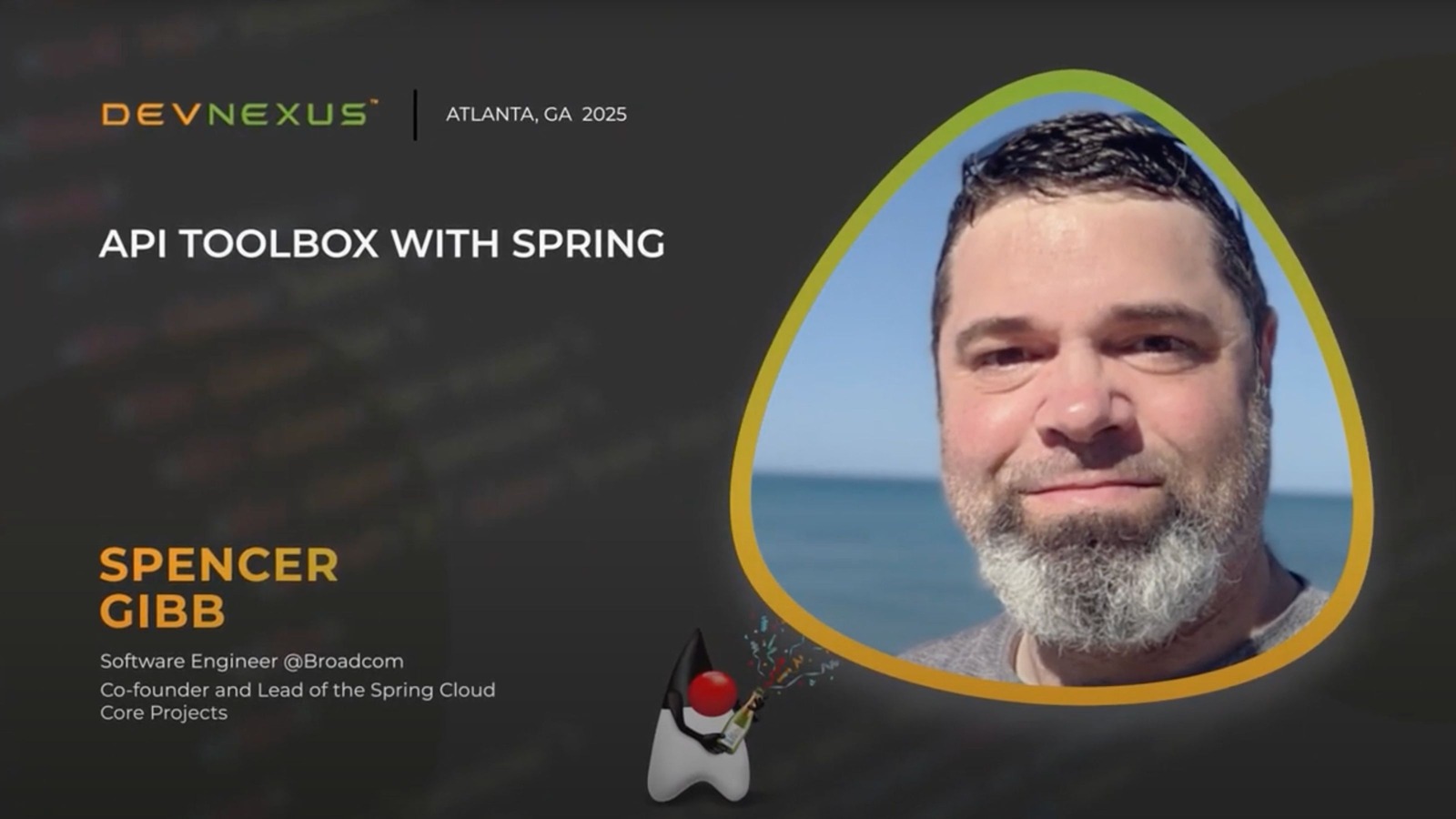API Toolbox with Spring with Spencer Gibb

In his Devnexus 2025 session, Your Comprehensive Spring API Toolbox: Building, Testing, and Consuming Modern Services, Spencer Gibb, veteran Spring engineer and co-founder of Spring Cloud, explored how the Spring ecosystem has evolved into a complete, end-to-end platform for modern API development. His message was clear — whether you’re building reactive microservices, consuming APIs declaratively, or ensuring production-grade testing, Spring offers a unified toolbox to handle every stage of the API lifecycle.
Spring gives developers the flexibility to choose the right tool for the job. For traditional HTTP workloads, Spring MVC remains a reliable foundation. When scalability and performance are critical, Spring WebFlux uses Project Reactor to enable non-blocking, asynchronous APIs that handle higher loads efficiently. Spring Data REST offers an even faster path to prototyping, automatically generating REST endpoints from data repositories — perfect for getting started in seconds.
Beyond REST, Spring embraces the modern API landscape with Spring for GraphQL, which allows clients to query only the exact data they need, improving performance and reducing network overhead. The framework is also investing heavily in gRPC and Spring Cloud Stream, giving developers robust support for asynchronous, message-driven systems that can scale gracefully without complex HTTP dependency chains.
A key focus of Gibb’s session was developer productivity and confidence in testing. He emphasized that accurate testing starts with realistic environments — and Test Containers make that possible. With native integration in Spring Boot, developers can now spin up Dockerized services like PostgreSQL or RabbitMQ directly within their test suite, ensuring that tests reflect real-world conditions rather than in-memory simulations.
On the client side, Spring continues to streamline how developers consume APIs. The new fluent REST Client introduces a modern, non-blocking way to make API calls, while the Declarative HTTP Interface (@HttpExchange) allows teams to define endpoints as simple, type-safe interfaces. This declarative approach reduces boilerplate and makes API clients easier to maintain — another step toward a smoother, more efficient development workflow.
A Cohesive Platform for Modern API Development
Spencer Gibb’s session highlighted how Spring has become more than a framework — it’s a cohesive platform built for the realities of today’s API-driven world. From HTTP and GraphQL to event-driven systems and advanced testing support, Spring continues to empower developers to build, test, and scale high-quality services with confidence.
🎥 Watch the full session: Devnexus 2025 – API Toolbox with Spring – Spencer Gibb
Want to dive deeper into cutting-edge developer practices and frameworks like this?
Join us at Devnexus 2026, where the world’s leading Java and software experts come together to explore the next generation of tools, patterns, and innovation. 🚀
devnexus.com



